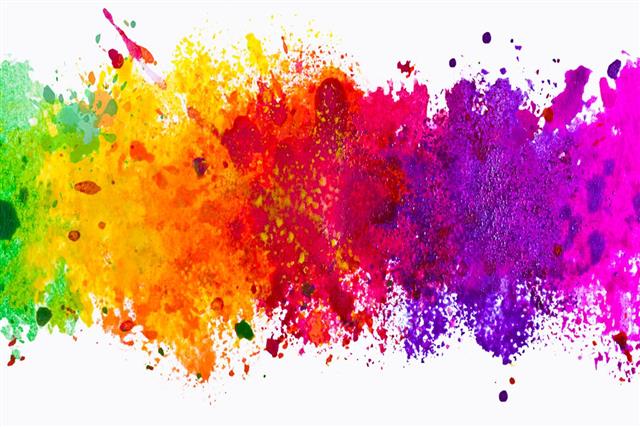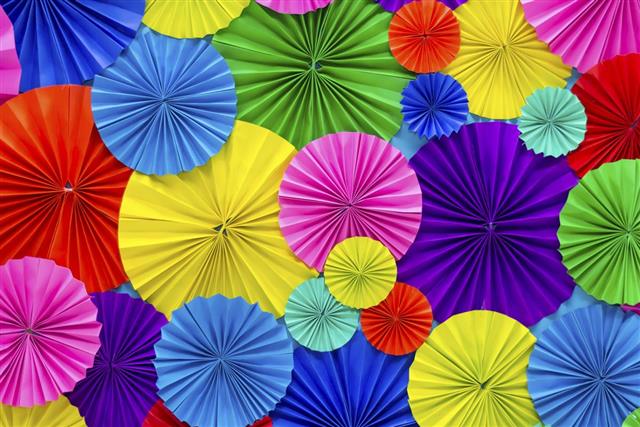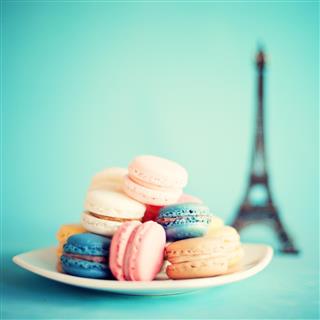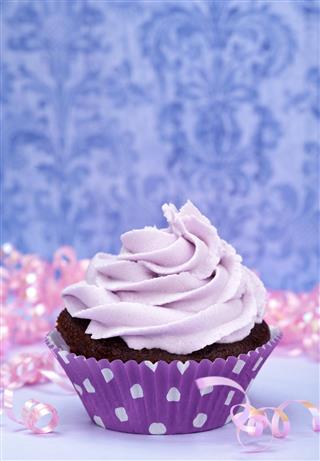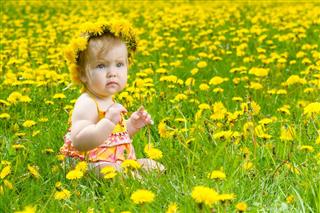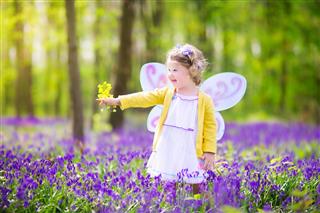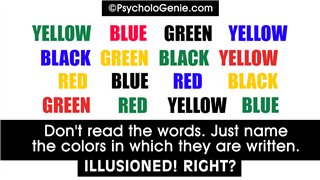
Colors can define the mood of a person, they can also create a specific aura or energy in the atmosphere. Colors form an integral part of our lives. The spectacular hues have varying effects on human nature and mind.
The power of colors cannot be denied, more so, as it is the sole instance of life on earth. Although sight and the human brain has helped in identifying colors and their delights, it’s interesting to note what colors mean to us in totality.
Red
Fun Fact
In Russian, RED means beautiful!
Red in a Nut Shell
Stimulating, bravery, attention, excitement, speed, fast action, fire, dynamic, heat, eroticism, war, blood, lust, dream careers, vibrant, provoking, exciting, strength, attention.
More than half the globe loves this color. We sure agree. Red is the second-most favorite color on earth. Be it the Ferrari red or a svelte red dress, red is an intense color, and defines many emotions and moods. The most important being, the color of love, passion, seduction, and desire. It also defines enthusiasm, power, and heat.
This color also represents anger, violence, and aggression. Red portrays danger and bloodshed. Lighter shades define sexuality, passion, and joy, while darker shades mean anger, willpower, aggression, leadership, rage, and courage.
The Power of Red
This is a color representing masculine energy. It stimulates appetite, and also other physical senses like sexual passion. It increases the metabolism rate and blood pressure. It magnifies and intensifies the object, and is attention-grabbing. It provokes the senses and makes a person react faster.
Avoid reds for any sort of negotiations and tensed situations. Red best serves for creativity and product selling that needs consumers to take action. The high visibility of red results in it being used in danger signs, fire brigades, and stop signs and signals.
Cultural Symbolism of Red
- Red was used by ancient Romans to dress their Gods.
- In India, China and Nepal, brides wear red traditionally, as it brings good luck.
- A red ‘kimono’ in Japan defines good luck and happiness.
- It stands for sacrifice, love, and passion in Christianity.
- Easter eggs were painted in red color in Greece.
- South Africans use red as the color for mourning.
- In Celtic culture, red stands for afterlife and death.
Blue
Fun Fact
BLUE is the universally chosen most favorite color and is officially chosen the world’s safest color!
Blue in a Nut Shell
Peace, tranquility, calm, stability, harmony, unity, trust, truth, faith, empathy, ideas, inspiration, friendship, infinity, confidence, conservatism, security, cleanliness, order, loyalty, sky, water, cold, technology, depression.
Blue is the most calming color around. The sky, water, blue denims, and even the trail of a soft blue scarf, soothe the mind. Blue stands for tranquility and stimulates calming chemicals in the body. It is also known as the color of intuition and sixth sense. It is believed blue is the color of heaven.
Blue is the least-hated color across cultures. It is the favorite color of more than 50 percent of the total world population,. A shade of royal blue defines royalty, superiority, and richness. Dark blue portrays knowledge, intelligence, expertise, logic, and dependability. Aquamarine blue defines great ideas.
The Power of Blue
Blue creates a feeling of trust and loyalty, and hence, is used in most corporate logos across the world. It is also an appetite suppressant. Some people, however, believe blue can be depressive. Hence, the saying, ‘feeling blue’. It is the best color to wear for job interviews. It enhances productivity.
Lighter shades of blue have more calming effects and feeling of freedom. Darker shades talk more about authority, professionalism, integrity, and sincerity. Blue color represents truth, and is the color of communication. Psychologically, this color portrays qualities of being neat, less fussy, and disliking confrontation and change.
Cultural Symbolism of Blue
- In ancient Egypt, blue color was known to ward off evil spirits, and was often worn by the Pharaohs.
- In Greece too, blue is considered to ward off evil.
- In Hindu mythology, blue is the skin color of Lord Krishna.
- It denotes immortality in China.
- In Spain and Italy, another term for ‘prince charming’ is ‘the blue prince’.
- Blue stands for mourning in Iraq.
- In Christianity, it is the holy color of Jesus Christ’s body and virgin Mary.
- In Belgium, blue is for a baby girl.
Green
Fun Fact
Night goggles use GREEN color, as the human eye is sensitive to this color and can distinguish most shades of green!
Green in a Nut Shell
Healing, abundance, safety, fertility, food, hope, resurrection, youth, hope, immortality, health, generosity, envy, quietude, compassion, renewal, moderation, nurturing, diplomacy, calm, misfortune, self-control.
The color green defines nature. Be it lush green fields or traffic lights, green is an important color, and has many associations with mankind. To begin with, it is the color of freshness, fertility, and growth. Green makes a healing color, and creates compassion, sympathy, and nurturing. Hence, it is often used to represent first-aid, and in hospitals.
It also creates harmony of the body and soul. It is the color of healthy relationships. Studies have shown that this color could decrease fatigue, depression, and anxiety. Green is the color of Anahata, which is the ‘heart chakra’. It is also believed that dark green improves concentration and vision. Green is the ‘go’ signal in all countries, not only for roadways, but for railways and ships too!
The Power of Green
It is a color that does not stress the eyes. Green also relaxes the nervous system and calms the spirit, enhances one’s mood and behavior. Darker shades define prestige, wealth, and money. Lighter greens will make you feel fresh, whereas too much green may define jealousy, envy, greed and revenge.
Pale lemon green and fluorescent green defines sickness more often, for e.g, animated characters turn green when sick. Productivity in known to increase with a green surrounding.
Cultural Symbolism of Green
- Green color is related to currency in the USA.
- In Japan, it defines life and birth.
- If a man wears a green hat in China, it defines that his wife is cheating on him.
- Green also relates to exorcism.
- In Iran, green is a sacred color.
- Houses that are painted green in M’zab and Ghardaïa (located in eastern Algeria), indicate that the residents have made their holy pilgrimage to Mecca.
- Green was sacred to the Egyptians, temple floors were often painted in green.
- It is the national color of Ireland.
- Since green defined fertility, it was often the preferred color for wedding gowns in the 1400s.
- In England, when the Blackfriars Bridge was painted in green, the suicide rates on the bridge decreased by 34 percent.
Yellow
Fun Fact
YELLOW is considered the happiest color among all colors in the spectrum!
More than half the pencils sold in America are colored yellow!
Yellow in a Nut Shell
Joy, happiness, logical, optimism, idealism, imagination, hope, sunshine, summer, gold, philosophy, creativity, practical, judge-mental, dishonesty, cowardice, betrayal, jealousy, covetousness, deceit, illness, hazard.
Yellow is the brightest color on the palette! And what does it say? Well, yellow is a warm color of sunshine and sun-kissed beaches. It is the color of happiness, mental clarity, optimism, cheerfulness, and energy. It is also a color that stimulates appetite, the brain, and memory, leading to confidence. It is proved that studying in yellow rooms enhances focus. Yellow is a practical color, it makes one more analytical, as it is mainly perceived by the brain, and a lot lesser by the heart.
Golden and warm shades in this color represent the assurance for a bright and positive future. Psychologically, this color helps one connect to mental thoughts. It represents caution, and is often used in signs. Yellow was also the favorite color of Vincent van Gogh.
The Power of Yellow
If yellow rules your favorites chart, it means you are a happy-go-lucky person, and enjoy the fine gifts of life. However, excess yellow may cause anxiety and irritation. On the contrary, yellow also defines cowardly attitude. Lighter and creamy shades of yellow will make you feel fresh, elegant, and joyful, whereas duller shades (yellowish green) will show jealousy and sickness.
Yellow can be used best in food and restaurants, as it increases hunger. It is also a fast traveling color, its energy vibrates at a fast pace. It is believed that yellow is a favorite among people with high intellect.
Cultural Symbolism of Yellow
- Yellow was the royal color of the emperors in China during the Ming and Qing dynasties.
- Yellow is sacred, and the color of celebration of spring in India. It is also related to farmers and merchants.
- Europeans consider yellow to be the color for joy, happiness, and hope.
- The Aztec people considered yellow color as the symbol of food.
- In France, yellow represents jealousy.
- In Egyptian and Burmese culture, it stands for mourning.
- Historically, Americans defined yellow color as the symbol of love.
- Yellow is an auspicious color in Buddhism, and stands for wisdom.
- It represents the value of courage and nobility in Japan.
Orange
Fun Fact
No word in the English language rhymes with ORANGE!
Orange in a Nut Shell
Energy, balance, warmth, enthusiasm, vibrant, expansive, flamboyant, justice, fascination demanding of attention. Red-oranges define sexual passion, desire, aggression. While darker shades of orange have the downside representing deceit, showoff, over-confidence. More lighter shades mean health, happiness, good manners and sophistication.
Refreshing and citrus, the humble orange dotes to a perfect combination of the heat of red and the happiness of yellow! Orange is the color for refreshment and energy. It is the color most commonly seen in everyday life, be it fruits, vegetables, the sunset, cultures, and even clothes.
This color is often considered ambiguous. It stimulates a sense of good health with its juicy and citrus association. It represents taste, and also increases appetite. Orange is the color of fun, adventure, and high spirits.
This color also sparks good communication. Hues in orange stimulate mental activity and increase the supply of oxygen to the brain. It is a color that helps in organizing things and setting them in order.
The Power of Orange
This color is the only one named after a fruit (i.e. Orange). It stands for endurance, harvest and autumn. It is also believed to be the color of lady luck. It’s psychology says that this color is re-energizing and helps one look at life in a positive way. The energy of this color is warm and thoughtful.
If orange is your favorite, you are more of an independent, thoughtful and fun loving person. Oranges are best used in foods and restaurants as they encourage social communications and also increase hunger. Kids are easily attracted to orange.
Cultural Symbolism of Orange
- Orange is the national color of the Dutch Royal family of Netherlands.
- It is the color most commonly associated with saints. In Buddhism monks wear yellow-orange colored robes.
- It is related to ‘gluttony’ in Christianity.
- Orange color represents joy and happiness in Japan and China.
- It is the emblematic color of the royal family.
- In India, especially in Hinduism, orange is a sacred and holy color.
- It stands as the symbol of inexpensive items and Halloween in the US.
Purple
Fun Fact
If a person is born in a royal and rich family, the phrase, “Born to the Purple”, is used!
26 March is celebrated as Purple Day.
Purple in a Nut Shell
Royalty, spirituality, nobility, selfless, spirituality, ceremony, mysterious, transformation, fantasy, wisdom, enlightenment, artificial, cruelty, arrogance, immaturity, pompous, mourning.
With its rich, deep hues, purple is a color that defines luxury. From rich velvets to royal branding, this color is regarded as perfect and ideal, as it defines the heat of red and the calmness of blue. It also relates to imagination and introspection. This color helps fulfilling deep thoughts and aspirations. Hues of purple and even violet are associated with futurism, spirituality, and psychic energy.
They also stimulate dreams and intellectual creativity. Purple stands for magic, mystery, creativity, and emotional balance. It defines pure and compassionate love, wisdom, void of ego. Purple is a color that people may either like or hate. Cleopatra, the Egyptian queen, simply loved purple color.
The Power of Purple
Violet color is mostly suggested for meditation, deep sleep, and calming an irritated mind. Leonardo da Vinci believed that in purple light (stained light of a purple glass), the power of meditation increased 10 times than usual.
Darker shades like deep purple define luxury, and also gloom, sadness, and frustration. Lighter shades of violet and lavender draw sensuality, romance, creativity, and most of the positive traits. Most men love the dark hues, whereas women prefer the lighter shades of purple.
Cultural Symbolism of Purple
- In Rome, during ancient times, purple-colored fabric was worn only by the royals, as this color was very expensive to make.
- Purple is the color of mourning in Thailand.
- In Catholic culture too, it stands for death, mourning, and crucifixion.
- Christianity also associates purple with Lent and Advent.
- In Chinese culture, purple was the color of harmony.
- In Japan, the color was named ‘Imperial Purple’, and defines power, status, and wealth.
- The American award for bravery is called the ‘Purple Heart’.
- Purple denotes the values of faith and virtue, in Egypt.
- Julius and Augustus Caesar marked purple as their royal color.
- Purple stands as the color of omen in Iran.
Pink
Fun Fact
Why do girls like pink? Well, researchers say women are biologically programmed for it. In the stone age, a woman’s job was to pick fruits in reddish tones, and hence, they became sensitive to reddish shades… especially pink!
Pink in a Nut Shell
Love, affection, heart, tenderness, friendship, innocence, charm, sweet, gentle, good health, thoughtful, kind, intuitive. The negative traits of pink are physical weakness, immature, low self-worth and willpower, over sensitive and emotional.
With its soft and delicate hues, pink stands universally as a feminine color. Pink roses, curtains or accessories, most of us love at least one shade of pink. This color symbolizes love and youth. It is a charming color, and defines self-worth, goodwill, feminism, joy, and happiness.
The feelings of nurturing, tenderness and care, are associated with pink. It draws the best of traits from red and white. This unique combination makes pink generous, beautiful, serene, pure, inspiring, and relaxed. Pink color unites the mind with nurturing and selfless thoughts.
It helps in receiving or giving affection. This color demands admiration and respect. Pink will make a person more gentle and careful in handling any situation or thing.
The Power of Pink
A study shows that the color pink has healing properties, especially for those people going through an emotional trauma. Pink was also used in prison walls to calm aggressive prisoners.
If pink is your favorite, you are more of a calm, graceful, loving, and sensitive person. Brighter shades attract youth, high spirits, confidence, action, and fun. More subtle pinks bring blush, sweetness, beauty, tender romance, and unconditional love.
Cultural Symbolism of Pink
- Pink stands for joy and happiness in Catholic tradition.
- It is the color for trust in Korea.
- In the European times, pink was the color for boys. Girls were dressed in blue and boys in pink, as it is a stronger color than blue. Later however, the concept changed. It was believed that girls took birth from the bud of the pink rose. Hence, thereafter, pink was associated with girls.
- It is a feminine color for most Eastern countries.
- In Japan, however, it is used for both males and females.
White
Fun Fact
WHITE has the most number of commercially available shades, than any other color!
If you see white color in your dreams, it represents joy and happiness in your family and home!
White in a Nut Shell
Reverence, purity, simplicity, cleanliness, peace, humility, precision, innocence, youth, birth, winter, snow, good, equality, sterility, marriage (Western cultures), death (Eastern cultures), cold, clinical, sterile, critical.
A pure and neutral shade of white is soothing. It is a combination of all colors that make up the spectrum. It balances the virtues of each color fairly, and hence, is considered perfect. White portrays the sense of being complete. It represents openness, truth, kindness, healing, and positivity.
This color also helps a new beginning and cleansing of the mind, body, spirit, and energies. It helps the mind organize the clutter in it, and makes space for new ideas. Due to the soothing qualities of this color, doctors and nurses wear white robes.
The Power of White
White energies will help you balance your decisions, and have a neutral outlook. It will help the mind fight and come out of the dark to a pure living. This color stands as a brilliant hue for the human eye. Best used in safety and cleanliness, white goes well with products that define purity, order, and simplicity.
Overuse of white can however not be healthy. In most cases, white rooms project a feeling of emptiness and being lonely. It also means to be cold, boring, and defines a life without happiness.
Cultural Symbolism of White
- White is considered to be a sad color in most Eastern cultures. In India and China, it is related to mourning and death.
- Queens in Europe considered white as the color of mourning, during the medieval times.
- In Thailand, India, and Burma, a white elephant is considered sacred.
- The Pharaohs of Egypt wore crowns that were white in color.
- In Western countries, white color defines a virgin. Brides often wear a white wedding gown, for good luck. White color also represents angels.
- White represents the Madonna in Christianity. The bible describes white as the color of light and the divine.
- In Persia, it is believed that white was the color worn by Gods.
- In Greece, white clothing was worn to bed during ancient times. It was believed that this color gave happy and pleasant dreams.
- The universal symbol for peace is a white dove.
Black
Fun Fact
BLACK is the most loved color in the world of fashion. Any new color trend is tagged as ‘the new black’!
Black in a Nut Shell
Power, sexuality, sophistication, formality, elegance, wealth, mystery, fear, evil, anonymity, unhappiness, depth, style, dramatic, evil, sadness, remorse, anger, underground, good technical color, mourning, death, control, pessimistic.
Dense and powerful, black is a heavy and timeless color. It defines mystery, and is often referred to as an unknown color. Black signifies seduction, secretive nature, sophistication, high status, career-headed attitude, and dignity. Black is a bold color of authority, sensation, elegance, domination, and confidence.
It is a color that also defines submissive nature, hence, it is worn by priests; which represents submission to the holy and divine power. As black defines an end, which is followed by a new beginning, this color is often preferred by teenagers. Thus, the transcendence from childhood to teenage makes them more attracted to black.
The Power of Black
This color helps in self-control and independence. It also has the capacity to absorb bad energies. Since black is a heavy color, it is often worn by people because it makes them appear slim. The sophistication of black also makes it a must-have for other luxury products and high-end markets.
This is why luxury cars are usually preferred in black. Excess black can be discouraging and sweep thoughts towards negativity. Black also denotes the unseen, evil, and darkness. It defines limits, and hence, black has an unfriendly and reserved appeal.
Cultural Symbolism of Black
- Priests wore black in Aztec culture. It was also the color of war.
- Black is the color for the traditional clothing of boys in China.
- In Egypt and Rome, black was used for mourning.
- In Eastern cultures, carrying black in any form with oneself, acts as a protection from evil spirits.
- Black cats in Egypt were believed to have divine powers.
- In other cultures, a black cat that crosses one’s way gives bad luck.
- In Thailand, black denotes evil, sadness, and bad luck.
- Black color was considered good by the native Americans, as the soil was black.
Brown
Fun Fact
In Japan, there is no specific name for BROWN color. They refer to this color with examples like ‘fox color’ or ‘tea color’!
Brown in a Nut Shell
Friendly, warm, strong, practical, sincere, honest, earth, hearth, home, outdoors, reliability, comfort, equality endurance, stability, simplicity, maturity. Some negative qualities are being stingy, passive, materialistic, boring, lacking humor and rough in nature. These traits make brown a favorite among most men.
The nutty and earthy shades of brown create a warm atmosphere. This color defines simplicity and friendliness. It creates a feeling of being complete, stable, no-nonsense, and down-to-earth attitude. Brown will make you feel complete, and in sync with the environment and nature around you. Brown defines the security of materialistic possessions, demands neatness and order.
Family, belonging, harmony, and taste for finer things in life, are a few more qualities of brown. This color also stimulates appetite, and represents the organic and natural things in life. This color does not express feelings easily, and tries to sort all matters within itself. Brown is again either a good color giving comfort and assurance, or it is a bad color that suffocates.
The Power of Brown
This color can be completely depended upon. As discussed, it is a solid color, defining structure. No other color contrasts brown. This shade goes well with all colors. Lighter shades of brown bring honesty. Beige and ivory hues reflect loyalty, and being practical and simple. Darker shades represent possessiveness, depression and sadness. Reddish and earthy browns define autumn and harvest. Copper and coffee hues relate to style, financial goals, and richness. It is believed that seeing brown color in your dreams is a sign of good luck for money.
Cultural Symbolism of Brown
- Brown resembles the drying of leaves, and hence, is not a happy color in India.
- It is the color for Thanksgiving in USA, along with orange.
- The Victorian term for a penny was a ‘brown’.
- Australians consider brown as the color of their land.
- It is believed brown color discourages sales in Columbia.
Gray
Fun Fact
Nearly 500 shades of the color GRAY can be distinguished by the human eye!
Gray in a Nut Shell
Security, reliability, intelligence, staid, modesty, dignity, formal, maturity, traditional, solid, conservative, practical, old age, sadness, boring.
Gray color is seldom associated with liveliness and fun. It a color of transmission from black to white, and is a mediator. It is not partial but neutral. Gray is often associated with being modest, intelligent, reserved, and matured. It defines dignity, class, elegance, and compromise.
Gray is also associated with intelligence, as the term ‘gray matter’ refers to the composition of the brain. Moreover, gray is considered as the pathway through an end to a new beginning. Since it is a modest color, gray does not stand in prominence, it is not an attention seeker. It helps the other colors bask in the limelight, while it prefers to be the background.
Combine gray with any other subtle color to add a little cheer to it. Gray combined with other lively colors can create a sense of being at rest and a cooling effect on the mind. Lighter grays define feminism, while darker hues are considered masculine.
The Power of Gray
The neutral quality of gray makes the mind calm and stable. But it can also make one indecisive at times. This color is plain and simple, without any emotions which can create energies that are dull and lifeless.
The psychological meaning of gray varies with the concentration of black in it. More dark gray can leave you feeling depressed, while lighter shades, with more of white, can make you feel lighter.
Cultural Symbolism of Gray
- Gray is associated with Christianity, and is symbolic to prayers and Lent.
- In Eastern cultures, it is associated with a helping attitude and travel.
- Gray is a dull and boring color in the Western world. It is also considered a transition between light and dark.
Gold
Fun Fact
It is believed that Satan has an aura of GOLD!
Gold in a Nut Shell
Extrovert, royalty, wisdom, confident, victory, happy-go-lucky, compassionate, sophistication, concentration, masculine energy, attainment, safety, mystic power, classy, generous, self-worth, abundance, mean, envious, fearing success, self-obsessed, fake, lies.
This shiny yellow cousin makes all things glitter. Golden color signifies wealth and the taste of luxury. It is symbolic for majesty and divinity. The color gold has many traits similar to that of the color yellow. It is also associated with the sun, leading to cheerfulness and happiness. Gold is strongly associated with good health, power, riches, friendship, and optimism.
It attracts success, generosity, and creates a higher intellect. It helps in connecting with the highest self and soul. It also stands for love and concentration. This color helps in developing maturity, charm, and is a confidence booster. Too much of gold can have a negative impact on energies, making one egoistic, greedy, hungry for power and authority.
The Power of Gold
Golden colors define value, prosperity, and also masculine power. It brightens everything around it. Adding warmth and richness is another good trait of this color. While bright gold can be eye-catching and gives happiness, dull shades in gold can be warm and traditional.
A balanced use of this color can make one loving and spiritual. Excess of gold can make a person selfish, pompous, egoistic, materialistic, distrusting, and demanding.
Cultural Symbolism of Gold
- Gold is associated with the Gods in many cultures. In Christianity, it symbolizes God’s color and divinity. Gold is used in many celebrations and holy days.
- In Buddhism, the golden color has a prestigious association. The statues of Buddha are often painted in gold.
- In Egyptian culture, gold color is extensively used in pyramids and hieroglyphs.
- In the Chinese new year celebrations, gold color is used in every decoration along with red, as red stands for luck and gold defines prosperity and wealth.
Turquoise
Fun Fact
The name TURQUOISE is derived from ‘Turkois’, a Greek word which means ‘Turkish’, as the stone in this color first came from Turkey!
Turquoise in a Nut Shell
Calm, patience, creative, forgiveness, growth, humanism, emotions, brotherhood, independence, peaceful, healing, serene, joyful, inspiring, innovative, dream, aware, dynamic. Some negative traits are secrecy, imbalance, indecisive, dishonesty.
A humble blend of blue and green, turquoise is a soothing and charming color. It defines a friendly outlook, easy approach, and open communication. This color helps surface the deep thoughts of the heart and mind, in words. It also has healing qualities for both the body and mind. It is often defined as a feminine color with a sweet feeling. This color comes in spectacular hues. It generates sophistication, emotional balance, and is also referred to as aquamarine.
The Power of Turquoise
This color has the power to replenish and awaken the energies and spirit. It clears the mind for thought during times of stress. Turquoise has future vision and observation. This makes it useful in times when one needs to make a good decision. This shade, used in moderation, can create a balanced mind, soothing atmosphere, energy, vitality, and soothing aura. It also attracts good luck and fortune. Excess turquoise can trigger practicality, ego, irritability, confusion, and fussiness.
Cultural Symbolism of Turquoise
- In Persia, this color was used to ward off evil spirits and energies.
- In many cultures, it was a symbol of luxury and wealth, and was used extensively to make jewelry.
Silver
Fun Fact
The best color for cars is SILVER. It is observed that silver-colored cars have the least number of road mishaps, as they are most visible even in low light!
Silver in a Nut Shell
Gentle, kind, meditation, sensitive, dignity, organized, glamor, classy, grace, feminine power, imagination, creativity, high-tech, aging with grace, modernity, compassion. Silver on the negative side is cold, dull, emotionally sensitive, hidden.
Just like gold, this shiny version of gray is also associated with luxury and wealth. It is a neutral color, and is referred to as the mirror of the soul. This color will help you see yourself in the same way others perceive you. It enhances intuition and psychic abilities. This color helps in good communication.
If silver is your favorite, you may possess the quality of knowing what’s best for you. The qualities of patience and perseverance are typical silver color traits. The well-known term ‘silver-haired’ is generally used to describe somebody who ages with beauty and grace.
The Power of Silver
Silver has a soothing effect on the mind. It helps emotional, physical, and mental relaxation. It cleanses the spirit, and clears all the negativity. This color also helps achieve perfect balance and harmony. Silver helps significantly to heal hormonal imbalances. It may help you get to the roots of truth and better understanding, in any situation. Though this color is more like gray, it still is a lot more active.
Cultural Symbolism of Silver
- In most Western cultures, silver defines a fashion statement, and is associated with wealth.
- Silver is the official color of Nevada state, along with blue. This state in USA is also called ‘The Silver State’.
Colors for each day
The power of colors is immense. Do they affect our everyday living? Well, dressing according to a particular color in the week, is considered a myth by most. However, many people still follow it, sometimes, even for fun. Colors to be worn on a particular day have numerological or astrological theories. The following describes colors that are considered lucky for each day of the week.
Colors for each day
Monday
Ruler – Moon
Most suited – White
Others – Cream, light shades of green, blue
Tuesday
Ruler – Mars
Most suited – Red
Others – Orange, brown, shades of warm colors
Wednesday
Ruler – Mercury
Most suited – Green
Others – Turquoise, metallic green shades, gray
Thursday
Ruler – Jupiter
Most suited – Blue, yellow
Others – Purple, light shades of blue, lavender and pink
Friday
Ruler – Venus
Most suited – Shades in blue, pink
Others – White, cream, chrome yellow, indigo
Saturday
Ruler – Saturn
Most suited – Black
Others – Violet, indigo, dark shades in blue and gray
Sunday
Ruler – Sun
Most suited – All warm colors, red, orange, yellow
Others – Shades in red-orange, pink
We may not look at colors in a way that they define what we feel. Whether they make us feel good or bad may be a question of belief. However, the fact remains that they make every aspect of life beautiful and meaningful with a splash of their variant hues!
